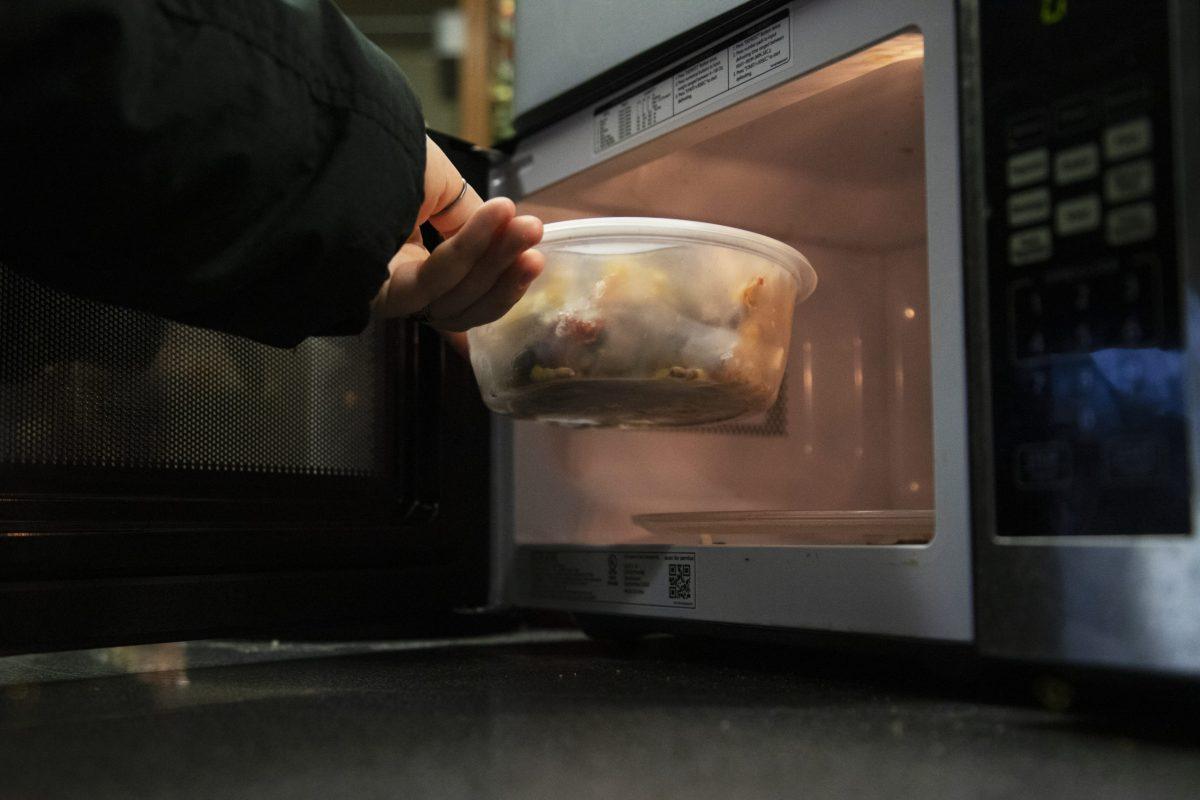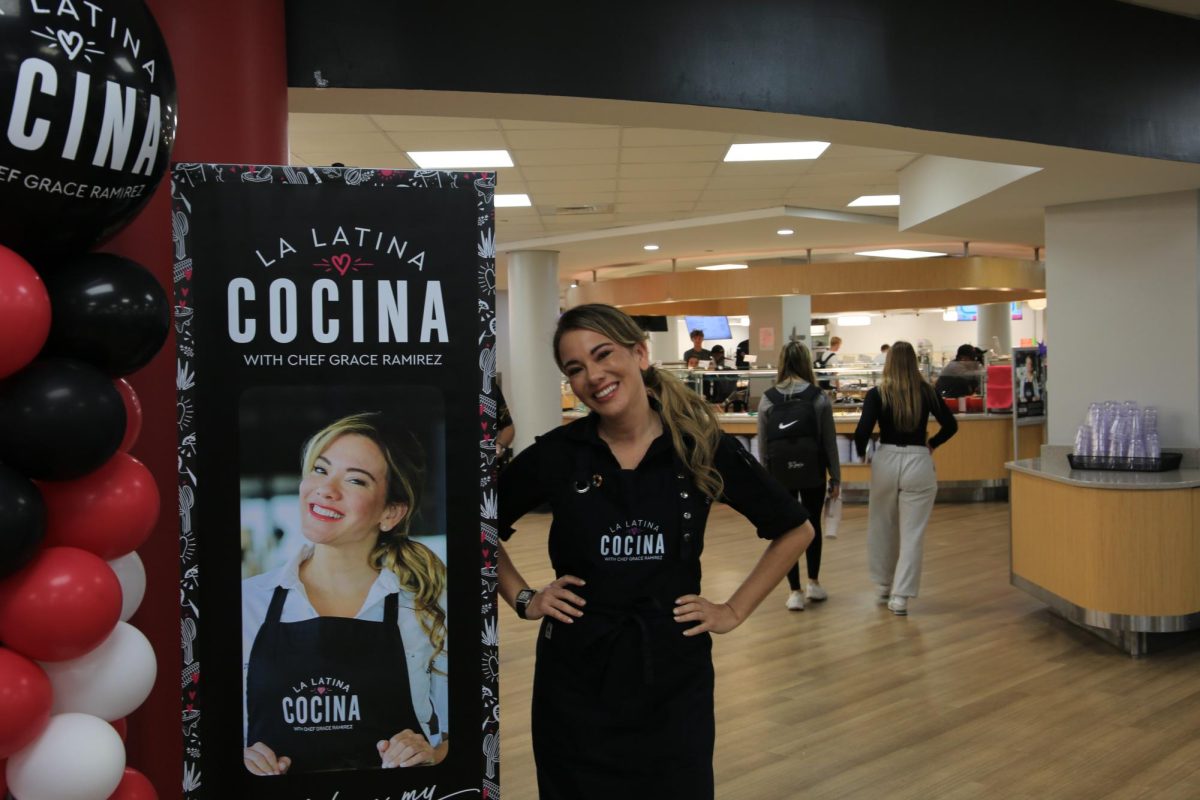For some people, making dinner sounds like sizzle, crack, pop.
For me, it’s beep, beep, beep.
Frozen dinners hold a special place in my heart. My parents were divorced when I was little, and while my mom cooked dinner for us every night, my dad and I enjoyed microwaveable meals while watching our favorite shows.
My dad’s way of cooking fits my college lifestyle. Even now, when I go grocery shopping, my cart is filled with Hot Pockets and Lean Cuisines. My favorites are the four-cheese pizza and the chicken fettuccini alfredo.
Plus, unlike my mom, I’m not a good cook. Microwaves allow me to cook food quickly and conveniently, without burning it.
Americans eat a lot of microwaveable meals. In fact, the Simmons National Consumer Survey shows that 77.83 million Americans consumed shelf-to-microwave oven dinners, entrees and soups in 2020. But this number is projected to decrease, thanks to a shift in dietary habits among Americans. According to Chicago-based Mintel Global Market Research, nearly all frozen food products have suffered from
declining sales in recent years.
I wondered if I could rely less on my microwave, too, so for one week, I decided to stop eating all microwaveable foods to see how much it impacted my daily life as a college student.
I went into this experiment trying to eat healthier meals, but after talking to Sarah Fine, Aramark nutritionist and dietitian at St. Joe’s, I learned that microwaveable foods have the ability to be nutritious. Students just need to be cautious of the sodium content in pre-made meals, something I never really look at when picking out my favorites.
“Microwaveable bags of frozen vegetables and whole grain, such as rice or quinoa blends, can be a great way to incorporate more vegetables and healthy grains into the diet,” Fine said. “They can provide fiber and more vitamins.”
Christopher Hunt ’23 used to eat three to four microwaveable meals a week. His favorites were ramen and soup. But then he decided to give them up, too.
“I stopped eating them because I have other options to eat and can cook using a stove, grill and toaster oven,” Hunt said.
Since changing his diet, Hunt said he feels healthier and better about what he’s eating now that he can cook.
“I have more options rather than being limited to a couple things,” Hunt said.
I wasn’t as successful as Hunt during my week-long experiment, and I ended up ordering takeout from Five Guys or Domino’s a few times. When I wanted something quickly, I ate a bowl of Kellogg’s Special K Red Berries cereal. After that week, I was back to enjoying my favorite easy meals that took five minutes or less in the microwave.
That may not be a bad thing. Theresa Crossan, registered dietician and professor of food chemistry at St. Joe’s, said microwave meals don’t have to be terrible for you. In fact, they have some benefits.
Crossan explained how a microwave enables food to hold on to its nutritional value, unlike cooking foods at high heat for an extended period of time.
“The cooking of food in a microwave is done through energy heat waves, like radio waves but shorter,” Crossan said. “These energy waves keep the molecules in food and water to vibrate. As these molecules vibrate, they pick up energy, which is thermal energy and heats the food.”
The short time in which it takes microwaves to heat up and cook the food helps preserve the nutrition content.
“For example, vitamin C, a powerful antioxidant which is great for the immune system, is in many vegetables and when cooked too long, or in too much water, loses much of its nutritional power,” Crossan said. “Microwaving or quick steaming of vegetables is the best way to
retain nutrients.”
Microwaves also destroy harmful bacteria that can make you sick, but Crossan advised me to be especially careful when cooking meat.
“Microwaves can cook meat unevenly,” Crossan said. “If the meat has certain ‘cold spots’ that have not been cooked, bacteria can survive on the meat and make you sick. To prevent this, if you like to cook your chicken, pork, beef or seafood in a microwave, invest in a meat thermometer, and check for the right internal temperature for your best, most assured food safety.”
For most meals, Crossan recommends cooking in an open dish, with a lightly wet paper towel covering your food.
“If you really want to rock your microwaveable meals, make sure they include protein, like meat, seafood, chicken, turkey, beans, quinoa or pea protein,” Crossan said. “Also, carbohydrates like rice and pasta, and fruits and vegetables. Make your plate colorful and then you know that you are getting good nutrition.”
I like the sound of that.















































